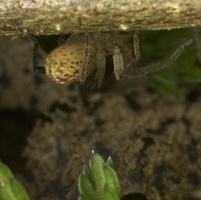- sort orderDefault
Photo title, A → Z
Photo title, Z → A
✔ Date created, new → old
Date created, old → new
Date posted, new → old
Date posted, old → new
Visits, high → low
Random - Google Map
- map
 home / Arachnida · voragyviai / Araneae · vorai / Miturgidae · sėlintojai / Zora spinimana · dygliuotašlaunis vaiduokliavoris
home / Arachnida · voragyviai / Araneae · vorai / Miturgidae · sėlintojai / Zora spinimana · dygliuotašlaunis vaiduokliavoris

Zora spinimana · dygliuotašlaunis vaiduokliavoris
- Gewöhnliche Stachelbein, Dornhandwanderspinne
- dygliuotašlaunis vaiduokliavoris
- gewone stekelpoot
- trawnikowiec pospolity
- ängstaggfoting
https://en.wikipedia.org/wiki/Zora_spinimana Zora spinimana has a Palearctic distribution. In Europe this is a common species in western and central Europe. The species is often found in grassland, normally near the ground in grass roots and leaf litter but also under stones or other objects. It can also be found in other habitats such as heathland, open woodland and raised bogs.
The females are 5-7.7 mm in length, the males 4.5–5 mm. The species is very similar to Zora silvestris but the brown lateral bands on the carapace are narrower than the yellow bands, whereas in Z. silvestris the brown lateral bands are wider than the yellowish bands. Z. spinimana is slightly larger than Z. silvestris and the overall yellow colour of Z. spinimana has a warmer hue.
The female is often found sitting on a white sheet of silk which she spins to protect her egg sac. Adults, of both sexes, may be recorded throughout the year, but mostly from late spring into the autumn, with two apparent peaks in early to mid-summer and the autumn.
The family Zoridae (vaiduokliavoriai) has been placed in family Miturgidae (sėlintojai) as the subfamily Zorinae.


